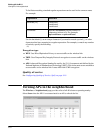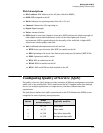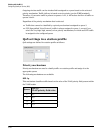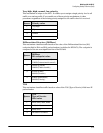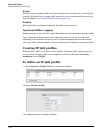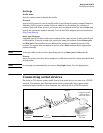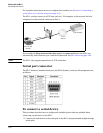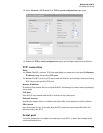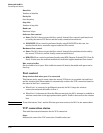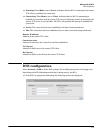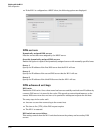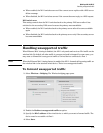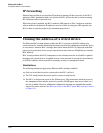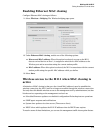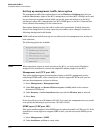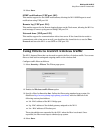
Working with the M111
Connecting serial devices
3-26
Data bits
Number of data bits.
Parity bit
Sets the parity.
Stop bits
Number of stop bits.
Baud rate
Baud rate in bps.
Software flow control
None: The M111 does not provide flow control. Instead, flow control is performed end-
to-end by the remote TCP device and the locally connected serial device.
XON/XOFF: Flow control is performed locally using XON/XOFF. In this case, the
attached serial device must also support software flow control.
Hardware flow control
None: The M111 does not provide flow control. Instead, flow performed end-to-end by
the remote TCP device and the locally connected serial device.
RTS/CTS: Flow control is performed locally using RTS (Request To Send)/CTS (Clear To
Send). In this case, the attached serial device must also support hardware flow control.
Max receive buffer
Receive buffer size in bytes. If the buffer becomes full, data is discarded until space can be
freed up.
Port control
Drop wireless link when port 1 is connected
This feature can be used in cases where the remote TCP device is accessible via both Port 1
and the wireless link. When enabled, it automatically switches the TCP connection based on
the status of the Port 1 connection:
When Port 1 is connected to an Ethernet network, the M111 drops the wireless
connection and sends all traffic via Port 1.
When Port 1 is disconnected from the Ethernet network, the M111 attempts to establish a
wireless connection via the appropriate station profile. Traffic is then sent on the wireless
link.
Note To use this feature, Port 1 and the Wireless port must connect the M111 to the same subnet.
TCP connection status
This table lists status information for the TCP connection.
State
Indicates the state of the TCP connection. Possible values are:



